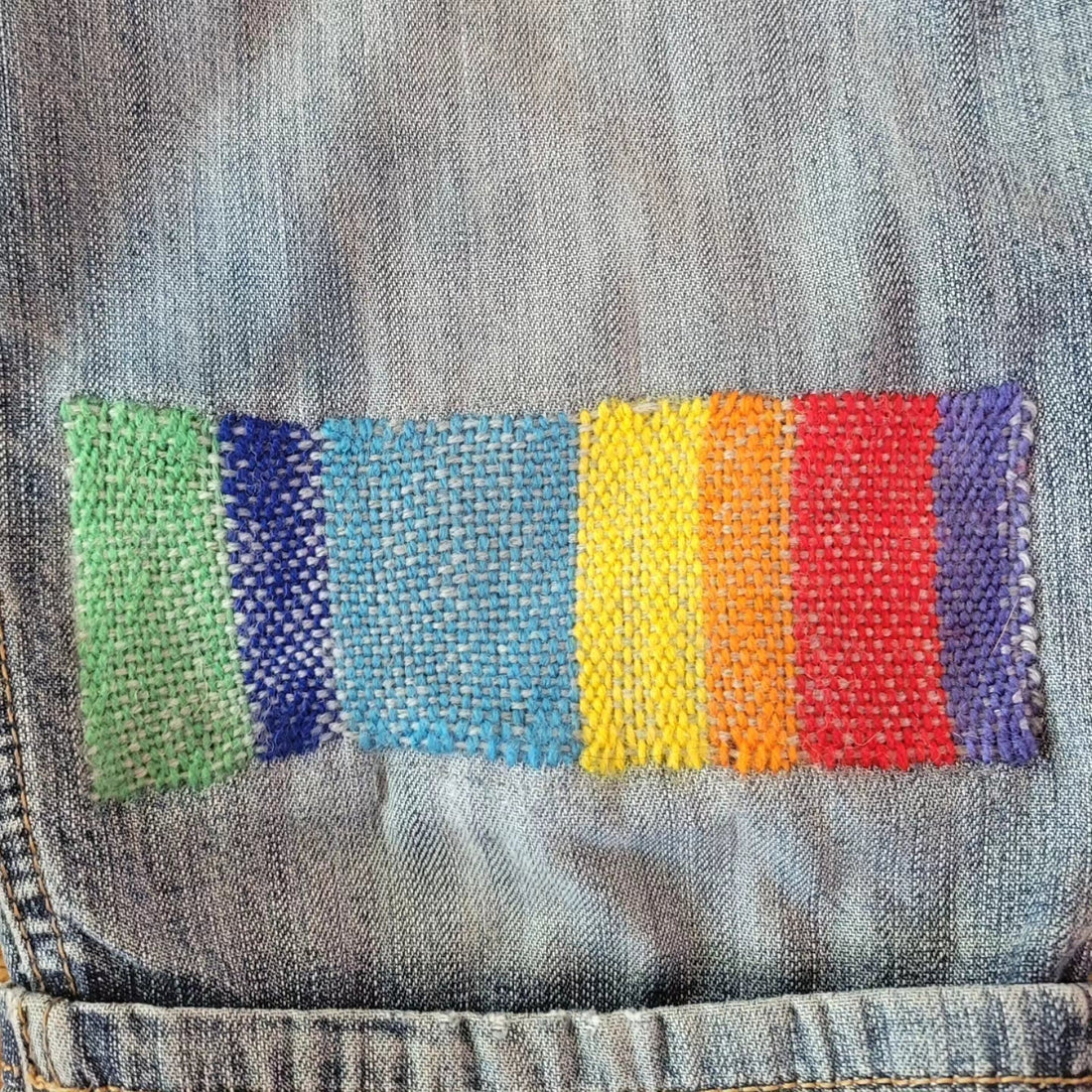Hi mendfriends! I'm delighted to introduce Linda, another wonderful Mending Migration host. Linda, like many of us, finds community in the bright, hopeful, Visible Mending corners of the internet as she does her bit to keep the culture of "Repair, Don't Replace" alive and well, even as it feels like so much of our world is falling into disrepair.
Linda finds great joy in fixing things, and has a reputation for repairing all manner of shoes, baskets, bedsheets, and anything else that catches her eye. She mends "for many reasons! I hate shopping in general and am really bothered by the consumerism that drives the fashion industry, so I mend in order to prolong the life of my clothing – so that it stays out of the landfill and so I don’t have to shop for more!"
Handmade with what we already have

Linda didn't mention this specifically, but as someone who also has big feelings about shopping and consumerism, I love to make gifts and just generally fill my time with creating, not consuming. Especially when I can use bits and bobs and found objects I don't have to buy new! Linda used the travelling Darning and Weaving bundle to its full extent to craft this lovely little tapestry, which I'll pop here as an interlude to all the mending.

"So many things have a lot of life in them once you fix them up a bit"
The first mend that Linda remembers doing was a hole in the knee of her jeans when she was about 13 years old. "I simply sewed a piece of paisley fabric behind the hole - my first visible mend!!"
She has repaired many things since then, but the Mending Migration was her first go at darning. Even though she's wanted to try darning for ages, "the intimidation factor was high" says Linda.
"The loom made things so easy!"
It's true: all the photos on this blog document Linda's very first forays into darning! With help from the Swift Darning Loom and video tutorials, she did a great job patching these socks, wouldn't you agree?

Rainbow Repair on jeans
One of the best things about the Mending Migration is hearing personal mending stories from our hosts. Linda asked her sister to bring something in need of mending and here's what happened!
"My sister brought over a pair of denim “shorts” with a hole in the knee – yes, she calls them shorts, but they have a knee, haha! I guess technically they are shorter than capris. Anyway, I had asked her if she had anything for me to mend while I had the Swift, because I really only had socks. She didn’t care how I fixed it, but she loves colour, so I knew she would want it to be colourful.

I ended up doing a very wide darn across the knee, using the long work surface on the Swift and opening up one of the side seams. The warp was a very light grey and I used about 6 different colours for the weft - just blocks of colour, in different sizes. Semi-rainbow, but not technically exact.

Overall I was pleased with the mend, except for the area where I pulled the weft threads too tight."
On the reverse side (pictured below), you can see how Linda strengthened the worn-out knee with a fabric patch, stitched in place around the edges as well as around the hole. The darn is decorative and serves to add a little extra reinforcement to the area.

What is the most important thing that someone who is just getting started needs to know about mending?
Linda reminds us, "Mending is accessible to anyone. Your mends don’t have to be visible and they don’t have to be perfect. They only have to be pleasing to you, and somewhat durable."
And there are so many ways to get there! The key is to practice, and find ways to overcome that "intimidation factor".
I'll editorialize Linda's response to add that mending in good company helps, too ;) happy mending, everyone.

